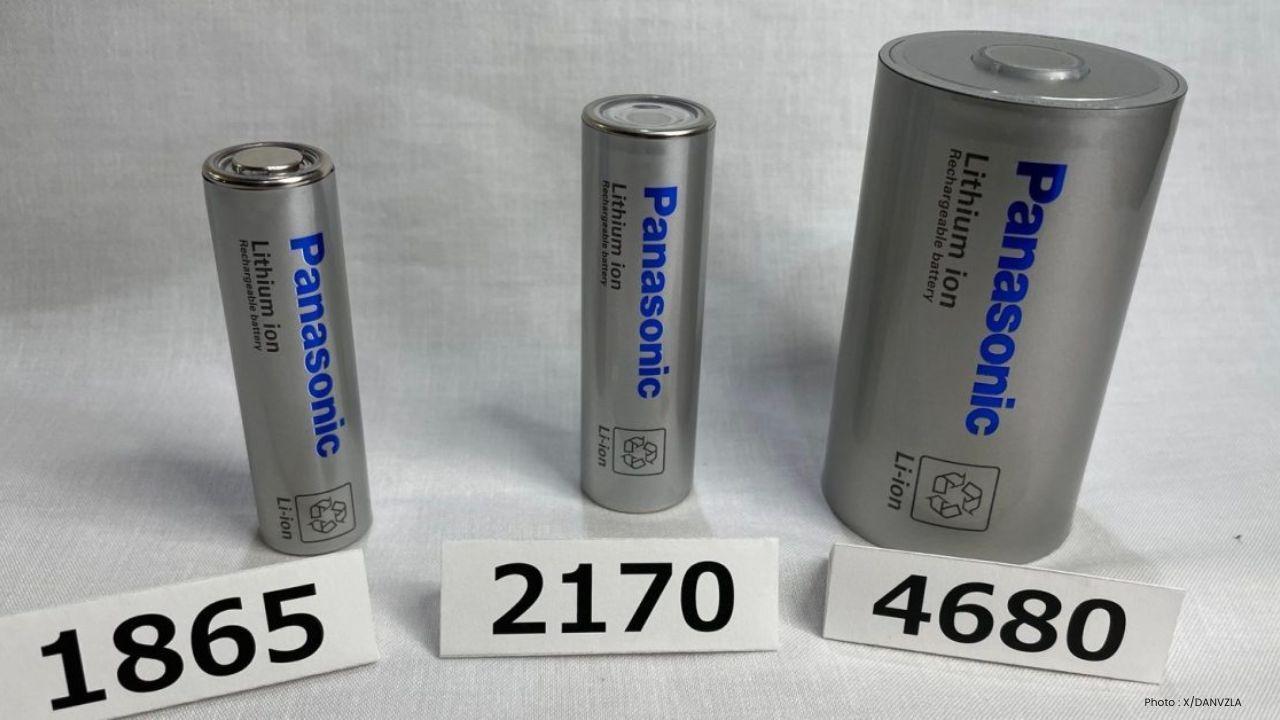
Post by : Avinab Raana
Panasonic has laid down a gauntlet in the electric vehicle space: its new battery cell design could enable a Tesla Model Y to reach 450 miles (≈725 km) of driving range on a single charge. If that pans out, it would mark one of the biggest leaps in energy density seen in recent years offering more range without making big changes to the vehicle design itself.
What makes Panasonic’s approach especially intriguing is how it rethinks the anode. Instead of starting with the traditional anode material during manufacturing, Panasonic’s design lets a lithium metal anode form naturally inside the cell after the first charge. Eliminating the initial anode setup frees up space that can be used for more active cathode material—namely nickel, cobalt, and aluminum—boosting how much energy the cell can store without increasing its size.
Panasonic claims this new cell chemistry can deliver about 25% more energy density compared to current battery designs. That improvement translates into roughly 90 extra miles of range for a Model Y using the same battery pack size. In practical terms, that pushes the Model Y from its current range into a new tier challenging range limits many drivers once viewed as out of reach.
According to Panasonic, this next-gen battery is expected to be available by late 2027. That gives the company time to refine manufacturing processes, run durability tests, and ensure safety under real-world conditions. What’s not yet clear is how much more this battery will cost, or how it might affect production volumes or battery cycle life.
A 25% energy density boost is not just a win for Tesla if they integrate it, that enhances the ante for every EV maker. More range means smaller batteries for the same travel distance, lighter weight, lower costs, or combinations thereof. It also increases pressure on competitors in South Korea, China, and elsewhere who have been racing to close the gap. Panasonic’s innovation could shift expectations for what is considered “good enough” range.
Range isn’t the only metric that gets a boost here. If the battery can store more energy in the same volume and weight, EVs could become lighter or have more efficient use of space. That opens up possibilities: lighter chassis, smaller battery packs to reduce cost, or adding extra range without increasing weight too much. For consumers, that means better efficiency, possible cost savings, and fewer compromises when traveling long distances.
Despite the excitement, several key questions are still unanswered. First, how will this battery perform under stress: high and low temperature, fast charging, long term degradation? Second, will the cost of producing these new cells be reasonable enough to roll out at scale? If the price premium is too high, adoption may lag. Third, how will supply of materials like nickel, cobalt, aluminum be managed, especially if demand spikes? And finally, what changes will be required in safety, thermal management, and battery assembly to support this chemistry reliably?
The timing of this announcement is notable. The EV market is growing ever more impatient for big gains in range, charging speed, and cost efficiency. Governments are pushing tighter emissions standards. Customers are demanding more value. By setting a target of 2027, Panasonic gives itself runway to innovate but also snaps into the competitive timeline. If it delivers, this could alter vehicle design strategies, OEM partnerships, and battery supplier hierarchies.
If Panasonic’s battery can deliver on its promise, infrastructure will need to keep pace. More range means fewer stops, but charging networks still need to be ready and reliable. Also, consumer confidence in battery longevity and safety will be more critical than ever. As EVs stretch into new capabilities, trust in warranties, repairability, and overall durability will shape whether buyers will commit.
Panasonic’s claim isn’t just about adding miles, it suggests a shift in what EVs can promise without radical design overhauls. If the battery meets targets for energy density, cost, and reliability, this may mark a defining moment in EV evolution. Yet, achieving those targets is never easy, and the road from lab announcement to mass market impact is long and uncertain. For now, Panasonic has thrown down a gauntlet. The real story will unfold as engineers, manufacturers, and drivers test whether the promise becomes reality and whether that reality genuinely transforms what an EV can do.
#trending #latest,#BatteryInnovation #SolidState #ElectricVehicles #TeslaModelY #EnergyDensity #EVTechnology #Panasonic #NextGenEV










Advances in Aerospace Technology and Commercial Aviation Recovery
Insights into breakthrough aerospace technologies and commercial aviation’s recovery amid 2025 chall

Defense Modernization and Strategic Spending Trends
Explore key trends in global defense modernization and strategic military spending shaping 2025 secu

Tens of Thousands Protest in Serbia on Anniversary of Deadly Roof Collapse
Tens of thousands in Novi Sad mark a year since a deadly station roof collapse that killed 16, prote

Canada PM Carney Apologizes to Trump Over Controversial Reagan Anti-Tariff Ad
Canadian PM Mark Carney apologized to President Trump over an Ontario anti-tariff ad quoting Reagan,

The ad that stirred a hornets nest, and made Canadian PM Carney say sorry to Trump
Canadian PM Mark Carney apologizes to US President Trump after a tariff-related ad causes diplomatic

Bengaluru-Mumbai Superfast Train Approved After 30-Year Wait
Railways approves new superfast train connecting Bengaluru and Mumbai, ending a 30-year demand, easi